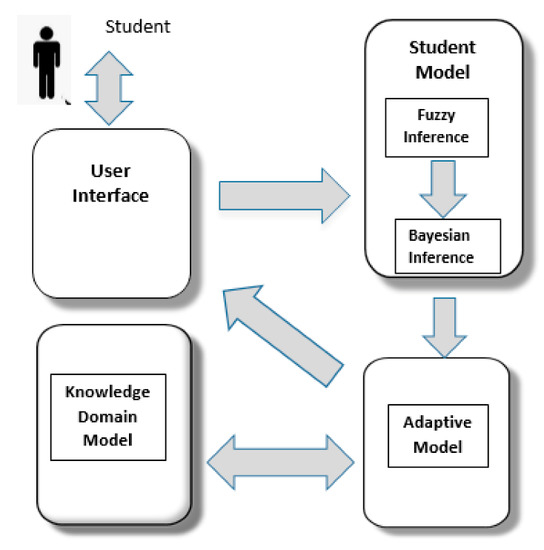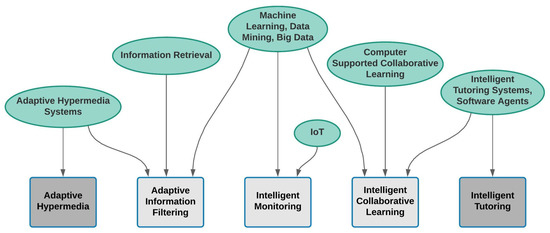3 Simple Techniques For Bioinformatics Tutor
Table of ContentsSome Of Bioinformatics TutorSome Of Bioinformatics Tutor10 Simple Techniques For Bioinformatics TutorLittle Known Questions About Bioinformatics Tutor.The Facts About Bioinformatics Tutor Uncovered
Of the total participants entailed in the training, 80% were students from public college organizations, while the remaining 20% originated from private establishments. To receive a certification of participation, trainees were required to attend a minimum of 90% of the overall training hours. As a result of this demand, an outstanding 95% of the participants successfully obtained their certifications, having not only fulfilled the minimum attendance requirements yet additionally completed all assigned activities throughout the training.
During the height of the COVID-19 pandemic, particularly between June and August 2020, the project team was entrusted with arranging specialized training in bioinformatics. This training was specifically intended at trainees from the research team Core for Study in Applied Computing at the Federal University of Pará (UFRA) The adaptation to remote learning systems because of the pandemic produced an opportunity to explore brand-new mentor approaches and digital devices that improved both reach and efficiency.
This training course was made to provide an available yet detailed review of Artificial Knowledge strategies, specifically as used in bioinformatics (Bioinformatics Tutor). This digital layout made it possible for engagement from students throughout Brazil, several of whom could not have had the possibility to participate in in-person sessions.
Indicators on Bioinformatics Tutor You Should Know
A significant feature of this course was its emphasis on hands-on discovering. Approximately 50% of the total training hours were dedicated to sensible tasks where pupils built smart versions and applications in a series of scientific domain names, including genetics, molecular biology, and ecological information evaluation. Widely utilized tools and frameworks such as Spyder, Google Colab, Jupyter Notebooks, and Orange were integrated into the coursework. These platforms allowed pupils to take part in real-time information manipulation, model training, and formula experimentation.
The training course brought in 80 individuals in total amount. Sixty of them were affiliated with different higher education and learning establishments in the state of Pará, while the staying twenty originated from institutions found in 5 other Brazilian states. This broad geographical representation highlighted the nationwide rate of interest in bioinformatics and the expanding demand for specialized abilities in this area. By introducing Expert system in a relevant and sensible context, the initiative served to connect the space in between concept and real-world application, offering pupils with a strong structure for future research study or work in the field.
The training initiative created component of a broader academic outreach effort referred to as the Bioinformatics on the Roadway task. This project has, over the years, presented loads of trainees to the globe of bioinformatics and computational biology. The events held under this umbrella effort have happened across several areas and years, as summed up in Table 1 (List of events, areas, years, and overall numbers of students and trainers)
One of one of the most amazing end results of the Bioinformatics when traveling effort has been its contribution to the development of decentralized research study groups. Numerous of these groups, originally combined by their engagement in training events, have considering that taken place to create independent scientific study in collaboration with neighborhood academic organizations. The training not just promoted clinical reasoning within the context of bioinformatics yet also triggered collective partnerships that extended beyond the training atmosphere. These cooperations have actually brought about enhanced local scientific efficiency and added meaningfully to the advancement of the broader bioinformatics community in Brazil.
The Definitive Guide to Bioinformatics Tutor
The task itself was conceptualized and arranged by MB and RR, that managed the preparation and execution of each action. Lectures were provided by a multidisciplinary group consisting of megabytes, FA, EF, KP, JS, DM, SN, LP, LG, RR, ih, and air conditioner. The very same team, omitting IH and RR, likewise worked as tutors for the functional training modules. Financing for the project was provided through the give 88887.200562/ 2018-00 from CAPES. The authors prolong their gratefulness to every person that contributed to the realization of this project, whether directly or indirectly, given that its inception.
The Federal University of Pará's Workplace of Research (PROPESP/UFPA) additionally offered monetary assistance, especially for the manufacturing of the final manuscript. The writers state no business or monetary disputes of interest that might have affected the research study. All analyses and point of views shared in this write-up are solely those of the writers and do not necessarily mirror those of their particular institutions, the publisher, editors, or reviewers included in the magazine procedure.

Getting My Bioinformatics Tutor To Work
From a pedagogical viewpoint, the training approach utilized in the training was deliberately interactive. Courses were carried out in a fashion that encouraged student engagement and conversation, exceeding rote memorization to explore just how concepts are developed, applied in read this post here life, and examined in scholastic setups. The instructional approach focused on nurturing both strong and battling students, click to find out more providing individualized assistance, and building self-confidence with sustained mentorship and persistence.

Each team, containing around 36 participants, was sustained by 3 coaches-- many of whom were postdoctoral scientists with customized expertise. These coaches not only aided develop the team jobs yet additionally promoted their implementation, ensuring that each research study question was both relevant and appropriately tough. The objective was to provide a biologically sensible context that participants can discover with open-ended goals and accessibility to curated datasets.
For additional understandings into the methodology and outcomes of this project-based discovering strategy, readers are routed to S1 Text, that includes detailed summaries of the pedagogical framework, evaluation techniques, and task motifs utilized in the training sessions.
The Basic Principles Of Bioinformatics Tutor
Of the total amount participants included in the training, 80% were trainees from public greater education organizations, while the remaining 20% came from exclusive institutions. To qualify for a certificate of engagement, trainees were called for to go to at the very least 90% of the total training hours. Significantly, beyond the trainees that enlisted in the training sessions, 7 skilled teachers took part in delivering the courses, while three specialized study professors worked with the overall training process. Around 50% of the overall training hours were devoted to useful activities where pupils developed intelligent models and applications Continued in an array of clinical domain names, including genetics, molecular biology, and environmental information analysis. The training not only promoted scientific thinking within the context of bioinformatics however also sparked joint relationships that extended past the training atmosphere.